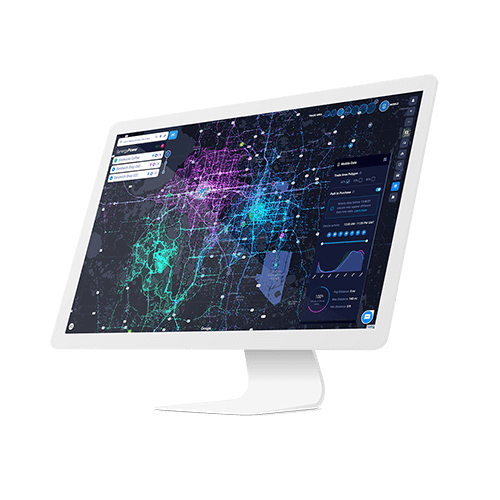Chains learn harsh lessons in NYC: technology is key to survival
New York City has long been the epicenter for retail and restaurant chains. Not only is it home to a huge consumer market, but it also has that “it factor” that attracts everything from flagship stores to pop-ups. Yet – for the first time in more than a decade – chains are closing more stores in New York City than they’re opening.

So, what do we mean by chains exactly? The term “retail chains” is often used interchangeably among three very different aspects of the business model:
- The actual business entity, like Starbucks, where the core business is selling coffee products.
- The physical brick and mortar location that Starbucks leases in NYC to sell their product.
- The website where consumers can purchase Starbuck products.
In its State of the Chains report analyzing chain stores in New York City, the Center for an Urban Future found that the number of local chain-store locations shrunk by 0.3 percent in 2018, marking the first year-over-year drop in national retail locations since the firm began reporting on the city’s chain retailers 11 years ago. In addition to apparel and fashion chains, closures included the likes of McDonald’s, Subway, Panera Bread and Quiznos. Despite what the data may suggest, NYC is not ground zero for the retail apocalypse that we keep hearing about. In fact, the city doesn’t have a retail problem. What it does have is a rent problem.
New York City is home to some of the highest retail rents in the world. Many high-demand locations throughout the city have seen a rapid escalation in rents that put a heavy cost burden on operators. However, retail entities are becoming increasingly sophisticated in their analysis of store performance by focusing on EBITDA and adopting technology to enhance overall profitability.

Brick-and-mortar retail stores are not being forced out by Amazon and other online competitors, but they have to combat slow moving landlords and sharpen their pencils to operate stores more profitability. The store closures in New York City highlight the challenges ahead for retail chains that are not adopting technology to fully understand the changing real estate landscape and conduct the analysis of operating costs versus the sales a physical location can generate.
Retailers that are adopting winning strategies are using technology and advanced analytics to find ways to achieve more while spending less on operating existing stores and potential new units. A critical part of that new approach is to look at store performance by EBITDA. They are using location intelligence technology to both identify better performing new locations, while also using data to show opportunities to consolidate or relocate. Yes, that may mean closing overpriced New York City stores. But at the same time, there are plenty of examples of brands, such as Starbucks and Dunkin Donuts, that are expanding in New York City by using data & analytics to identify profitable location opportunities.
Retailers, and especially QSR’s, are realizing that looking at old metrics for trade areas are no longer economically viable. Those that are operating on old school metrics like trade area, population density, drive times and top-line revenue performance as their only measurement are struggling to survive. Some examples of the more innovative data sets that retailers are using to measuring store performance by EBITDA include:
- Spatial.ai tracks GeoSocial sentiment data from 8 billion social media conversations including Facebook, Instagram, and Twitter to help chains better understand customer’s behavior and where to find them.
- INRIX traffic data identifies traffic movement on 2.5 million miles of roads in America. Their data shows the number of cars traveling on any given major road, and in any direction, with further segmentation by day of the week or time of day.
- With UberMedia Geofencing, chains can gather data on every smartphone that has entered their stores within the last 365 days. Operators can use the data to better understand the path to purchase, as well as track customer travel patternsbefore and after their arrive or leave a store.
- BlackBox Intelligence tracks performance across 27,000 restaurants which helps brands decide in which markets to prioritize development by benchmarking them relative to peers in any region.
So, how do brands wrap their arms around all of that data to measure store performance? Winning brands thrive on strategies that are using advanced location intelligence that incorporates new data sets into A.I. powered platforms to build more sophisticated predictive models, which help improve accuracy in sales forecasting. A.I. machine learning combines third-party data with a chain’s own data, such as rent, square footage, parking, and other factors, to create highly predictive sales models – all within minutes. With all of this data, retailers can drop a pin on a map anywhere, and know within a few percentage points:
- How much that store will do in sales volume.
- How adjustments to attributes, such as square footage and parking, will change the total sales volume.
- By integrating data with lease or occupancy costs, the models also can provide an analysis of EBITDA at this location and show whether that EBITDA fits with a brand’s formula for growth.
The 90’s retail mantra “if you are not growing new locations, you’re dying” is no longer relevant in 2019. The retail location is changing, but the importance of location is not. Retailers need to be very thoughtful about the number and placement of stores – and they have the technology at their fingertips to do so. For the first time in human history, the retail tenant has the upper hand over the landlord by being able to use A.I. and datasets to more accurately predict store profitability.
NYC has long been the starting point of hot retail trends. But in this case, that trend is not the demise of brick-and-mortar retail, but rather a new approach to profitability that uses location intelligence platforms to make more strategic, science-based retail development decisions.
Recommended Posts

